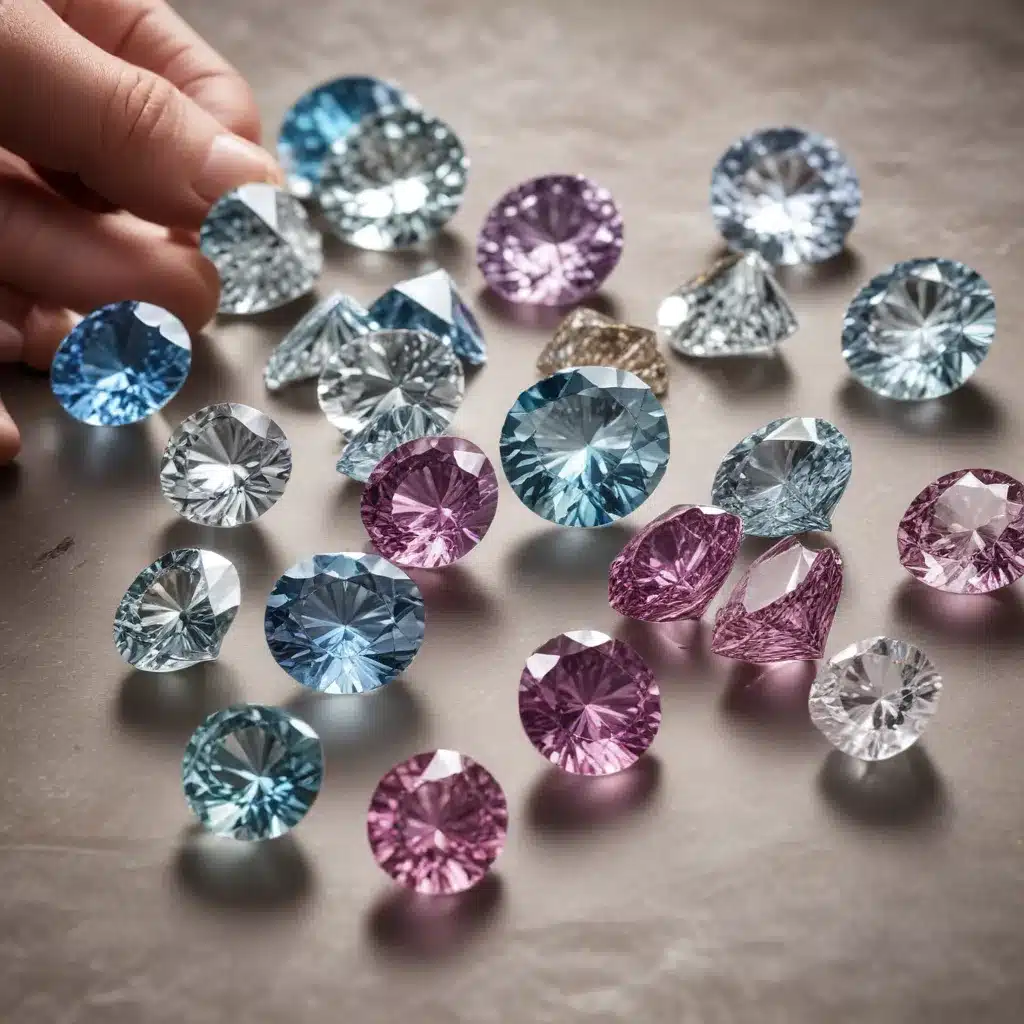
The art of gem cutting is a delicate balance between science and creativity. From the rough stone to the dazzling facet arrangement, each step in the cutting process plays a crucial role in unleashing a gemstone’s true brilliance. At Shelby Gem Factory, we’re passionate about guiding you through the intricacies of gem cutting techniques, empowering you to make informed decisions when selecting the most captivating gemstones for your jewelry designs.
Faceting Techniques: The Pathway to Brilliance
The foundation of exceptional gemstone sparkle lies in the faceter’s skilled hands. Faceting, the process of cutting precise angled planes on a gemstone, is the primary technique used to enhance a gem’s optical properties. Three core faceting styles form the basis of countless cutting variations:
Brilliant Cuts: Characterized by triangular and kite-shaped facets radiating outward, brilliant cuts such as the round brilliant, princess, and cushion are renowned for their intense scintillation and fire. The strategic placement of these facets creates an unparalleled light performance, making brilliant cuts the favored choice for diamonds and many colored gems.
Step Cuts: Rectangular facets ascending the crown and descending the pavilion in a stepped fashion, step cuts like the emerald and Asscher showcase a gem’s clarity and color with a more subtle, elegant gleam. These cuts are particularly well-suited for transparent stones where the internal beauty takes center stage.
Mixed Cuts: Combining the brilliance of the crown with the stepping of the pavilion, or vice versa, mixed cuts blend the best of both worlds. The Barion cut, with its unique “quarter moon” facets, is a prime example of this versatile approach, offering exceptional light performance.
Cabochon Cutting: Embracing Natural Beauty
While faceted gems captivate with their dazzling sparkle, cabochon cutting emphasizes the inherent beauty of the material. In this technique, the gemstone is shaped into a smooth, rounded dome, often showcasing phenomena like play-of-color, asterism, or chatoyancy. Cabochons are particularly well-suited for opaque or translucent gems, such as opals, moonstones, and star sapphires, where the focus is on displaying the stone’s unique visual effects.
Polishing Methods: The Final Touch
Once the cutting is complete, the gemstone undergoes a meticulous polishing process to achieve its final, lustrous appearance. Using specialized polishing wheels and increasingly fine abrasives, faceters carefully hone each facet, removing any microscopic imperfections and maximizing the gem’s brilliance. This final step is crucial in ensuring the stone’s optimal light performance and visual appeal.
Optical Properties: The Science Behind Sparkle
The captivating sparkle of a well-cut gemstone is the result of its intrinsic optical properties working in harmony. The refractive index, a measure of how much a material bends light, plays a crucial role in determining a gem’s brilliance and dispersion (the separation of white light into its colorful spectrum, creating “fire”).
Diamonds, with their exceptionally high refractive index of 2.42, are renowned for their unrivaled brilliance and fire. Other gems, such as moissanite (2.65) and cubic zirconia (2.15), while offering similar visual effects, cannot quite match the dazzling performance of a expertly cut diamond.
Gemstone Symmetry and Proportions: The Key to Precision
Achieving the perfect balance of symmetry and proportions is crucial in unleashing a gem’s full potential. Ideal cut proportions, carefully calculated angles and depths, allow the light to enter the stone, reflect, and refract back to the viewer’s eye, creating the desired optical performance.
Precision grinding and polishing are essential in maintaining this delicate symmetry. Even the slightest deviation in facet angles or alignment can result in light leakage, diminishing a gem’s scintillation and overall appearance.
Factors Influencing Sparkle: Maximizing the Wow Factor
The arrangement and number of a gem’s facets play a significant role in its dazzling display. By carefully orchestrating the reflection and refraction of light, skilled faceters can amplify a stone’s brilliance (the brightness of white light) and fire (the colorful flashes of light).
Factors such as the depth and width of the gem, the size and shape of the table, and the positioning of the crown and pavilion facets all contribute to the overall sparkle. Mastering these elements is the hallmark of a true gem cutting artisan.
Gemstone Cut Quality Evaluation: Seeing the Difference
Discerning the nuances of cut quality requires a trained eye and specialized analysis tools. ASET (Angular Selective Evaluation of Transparency) imaging, for example, provides a visual representation of a gem’s light performance, highlighting areas of optimal brightness and leakage.
The elusive “hearts and arrows” pattern, visible in some expertly cut round brilliants, is another indicator of supreme cutting precision. Formal grading systems, such as the GIA (Gemological Institute of America) cut grade, offer a standardized benchmark for evaluating a gem’s overall cut quality.
Advancements in Cutting Technology: Pushing the Boundaries
The gem cutting industry continues to evolve, with technological innovations driving new techniques and design possibilities. Computer-aided design (CAD) software allows faceters to experiment with complex cutting patterns, optimizing light performance before even touching the rough material.
Automated cutting machinery, combined with advanced optics and sensor technology, have elevated the precision and consistency of modern gem cutting. Alongside these advancements, innovative techniques like concave faceting and fantasy cuts are expanding the realm of what’s possible, pushing the boundaries of gemstone artistry.
Gemological Perspectives: The Evolving Art of Cutting
The story of gem cutting is a rich tapestry woven with historical developments, cultural influences, and shifting trends. From the ancient rose-cut diamonds to the modern masterpieces of the Barion and divine cuts, the art of gem cutting has continually adapted to the desires of jewelry enthusiasts and the capabilities of cutting technology.
As we look to the future, the pursuit of the perfect sparkle will undoubtedly continue to inspire gem cutters, gemologists, and jewelry designers alike. At Shelby Gem Factory, we’re honored to be part of this ever-evolving narrative, empowering our customers with a deeper understanding of the science, craftsmanship, and timeless allure of exquisitely cut gemstones.

